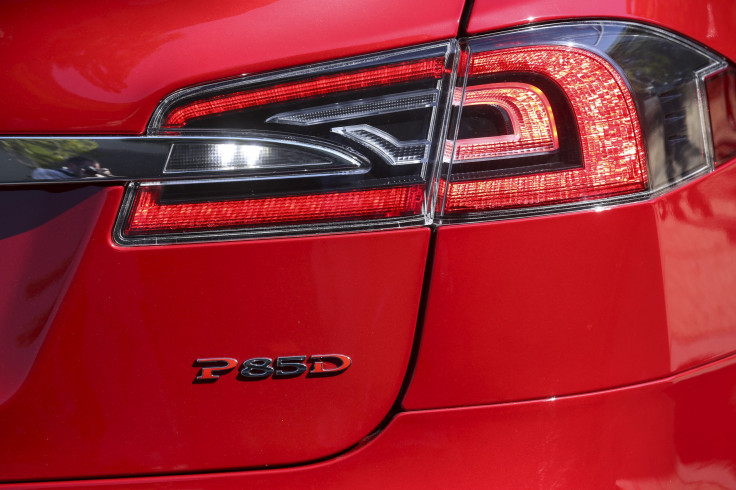Tesla Motors Inc (TSLA) Shares Rally After Model S P85D Review Results Released

Tesla Motors Inc.’s share price shot up Thursday after Consumer Reports gave the Tesla Model S P85D its highest road-test score on record. The sportier dual-motor version of the world’s only fully electric-powered luxury sedan received kudos from Consumer Reports about two years after it gave the single-motor version of the Model S its highest score until then.
Essentially, the Palo Alto electric car maker beat its own Consumer Reports record with recently introduced enhancements to its premium model, which starts at $105,000 before state and federal government electric-car tax credits and incentives.
“The car’s thrust is forceful and immediate,” says the magazine. “Its near-instant g-forces can otherwise be achieved only by leaping off a building -- literally.”
Tesla’s share price was knocked down to a four-month low earlier this week during a massive sell-off of U.S. stocks in the wake of growing concern over China’s economic slowdown and yuan devaluation. But reacting to the positive news, investors piled back into Tesla (Nasdaq:TSLA), pushing its share price up 8.07 percent to $242.99 on Thursday afternoon, well above the Nasdaq’s 2.45 percent jump. The company stock is on track to recover what it’s lost over the past two weeks.
The Consumer Reports review affirms not just the Tesla Motors engineering feat; it also underscores the superior torque performance of electric motors. Unlike gasoline-powered cars, electric car engines push out the maximum torque from a stopped position, compared to the rev-up time needed to get gas engines to reach maximum torque. This means, for example, that a Model S smokes most gas-powered sports cars for the first 100 yards or so before a more powerful sports car overtakes it.
The reviewers clocked a 0-60 mph acceleration of 3.5 seconds, which is slightly lower than Tesla’s advertised 3.1 seconds but still impressive for a car in its price range and style. A $10,000 so-called “Ludicrous Speed Upgrade” option for the P85D purports to increase that acceleration to 2.1 seconds, higher than most street-legal sports cars. Electric motors are quiet, too, giving the Model S a unique stealthy performance typically ascribed to engines that growl.
The down side: Unlike comparable luxury cars, Tesla skimps on interior opulence, the reviewers said, and the ride is firm, which means even small bumps and imperfections on the road are felt compared with comparable luxury cars. And reliability is hardly Honda-like, with owner-surveys giving the Model S an average rating.
Last year, Consumer Reports reported “glitches” in the basic Model S. Minor problems, like the 17-inch center console screen -- a key feature of the vehicle -- going dark unexpectedly appeared; it's a crucial issue considering most of the vehicle’s commands are operated through it. For its part, Tesla has said numerous times that all Model S vehicles are constantly improved through over-the-air updates.
“It might be tempting to guess that its reliability score will go down,” the report said. “The reality is, it might -- depending on the frequency and severity of problems reported by our subscribers and whether they show that reliability is below average.”
Car & Driver magazine also gives the Model S high marks for styling and preface but said it faced challenges in long-distance road trips.
“After pitching the idea of driving the Tesla to Virginia to multiple coworkers, nobody wanted to tag along on a trip they felt would end in firsthand experience with Tesla Motors’ roadside assistance,” the magazine said. One problem was that Tesla’s on board computer kept recalculating range, especially as the driver headed south and turned on the A/C and watched the distance to the next Tesla Supercharger station (where free energy is provided to Tesla owners) become increasingly worrisome.
In some cases, the driver had to turn around to make it to the nearest charging outlet. In the end, a 10-11 “pleasure cruise” with a gas-powered car became a nearly 15-hour road trip carefully monitoring the battery gauge and figuring out where to stop for a recharge.
© Copyright IBTimes 2024. All rights reserved.












